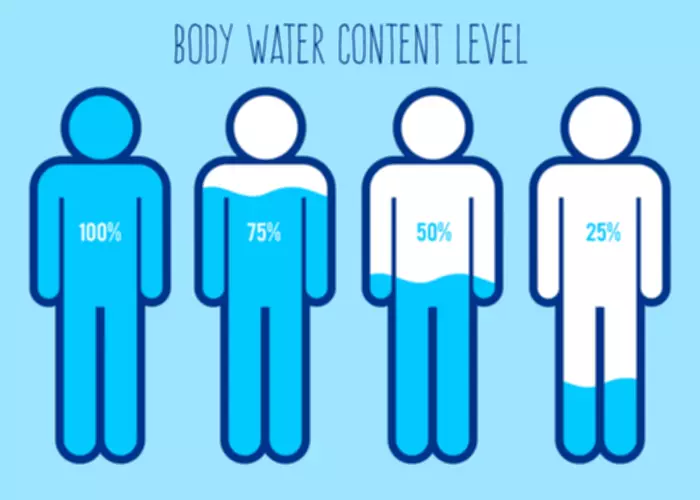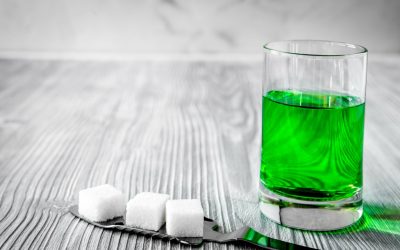One additional concern is that if a person is acutely intoxicated and receives opioid medication, the combination can lead to problems in monitoring therapeutic or toxic effects of the opioids, as well as effects of the traumatic injury. When levels of inflammatory proteins were measured, the researchers discovered that while inflammation pathways were elevated in both dependent and non-dependent mice, specific molecules were only increased in dependent mice. It also indicates which how to take suboxone tablets inflammatory proteins may be useful as potential targets for intervention to combat alcohol-related pain. Follow-up studies are focused on how these molecules might be used to diagnose and more effectively treat alcohol-related chronic pain conditions. Potential mechanisms by which pain may serve as a motivator of alcohol use include negative and positive reinforcement, lack of alternative strategies for pain-coping, and overlapping neural systems that process stress and reward.
Alcohol & trauma
The current review integrated two lines of empirical inquiry (i.e., the effects of alcohol on pain and the effects of pain on alcohol use), with evidence derived from a broad range of epidemiological, clinical, and experimental research. Taken together, these data suggest that pain and alcohol may interact in a bi-directional manner, possibly resulting in greater pain and increased alcohol consumption over time. Bi-directional arrows are used to acknowledge that reciprocal influences may occur across associations between pain and alcohol use, and dashed lines are used to illustrate the modest causal evidence derived from the current literature. Dashed, bi-directional lines between moderate and excessive alcohol consumption acknowledge that alcohol use patterns may change (i.e., increase or decrease) over time.
- In fact, chronic pain and alcohol consumption often combine to create a vicious circle wherein people with chronic pain drink to feel less uncomfortable, but drinking ultimately increases their pain.
- Chronic pain, depressive disorders, and alcohol abuse are widespread health conditions with a high risk for comorbidity [1,2,3,4,5].
- That is, as you spend more and more time thinking about pain, it begins to take up more of your life.
- Similarly, the model predicts that intense and/or untreated injury increases allostatic load through similar neural mechanisms enhancing vulnerability to alcohol dependence by affecting relevant alcohol actions upon dysregulated neural circuits.
Effectively and Safely Addressing Chronic Pain
Indeed, a recent meta-analysis by Ng and colleagues [42] has challenged the common notion that MDD is primarily linked to deficits within the reward circuitry, particularly the ventral striatum. Instead, they proposed that dysregulated corticostriatal connectivity may underlie reward-processing abnormalities in MDD. It is likely that the more prominent neuroplastic changes in these cortical regions due to direct or indirect effects of ALC may contribute to a stronger corticostriatal dysregulation and hence the higher likelihood of depression that we observed in association with ALC. Prescription opioid misuse has been defined as inappropriate use of opioid medication, including aberrant drug behaviors (e.g., dose escalation, use other than as prescribed; Pergolizzi et al., 2012).
Chronic Pain in Relation to Depressive Disorders and Alcohol Abuse
Extended periods of alcohol exposure induce pain symptoms and exacerbate chronic pain arising from other sources. Alcoholism is typically accompanied by the emergence of negative emotional states that constitute a motivational withdrawal syndrome when access to alcohol is disrupted (Gilpin and Koob, 2008; Koob, 2003). Prolonged and excessive alcohol withdrawal alcohol exposure itself generates a small fiber peripheral neuropathy in both rodents and humans (Mellion et al., 2011). Indeed, the development of neuropathy during alcohol withdrawal may represent one critical, definitive symptom indicative of dependence clinically distinct from alcohol abuse (Diamond and Messing, 1994).
Experimental Investigations of Pain and Alcohol Consumption
As Table 1 indicates, the majority of individuals in both the ALC and CTRL cohorts reported no history of chronic pain (ALC, 69.1%; CTRL, 74.3%). However, chronic back/neck problems were reported at a higher rate (ALC, 18.3% vs. CTRL, 11.5%) and at an earlier onset (ALC, 25.1 years vs. CTRL, 28.1 years) in the ALC cohort. In comparison, absence of a history of depressive disorders was less common in the ALC group compared to the CTRL group (ALC, 31.3% vs. CTRL, 65.1%).
Alcohol Use Disorder and pain are complex conditions having multiple additional etiological impacts reviewed elsewhere (Oscar-Berman et al., 2014; Zale et al., 2015). Psychotherapy be extremely beneficial in dealing with chronic pain’s mental and emotional aspects. Because physical and emotional pain are related and activate one another, addressing depression, sadness, frustration, irritability, anger, anxiety, and fear has multi-level benefits. By shifting perspective and adjusting one’s thinking, it’s possible how long does cocaine stay in your system what to expect to change emotional responses and, in turn, dramatically decrease the level of suffering. This can significantly reduce the stress and suffering connected to chronic pain, which helps calm the sympathetic division of the autonomic nervous system and decrease pain perceptions. Since previous research has shown that the immune system is activated in response to peripheral alcohol neuropathy, the researchers also examined the activation of the immune response in non-dependent mice with neuropathic pain.
We hypothesize here that pain sensitivity, analgesic actions of alcohol and withdrawal-induced hyperalgesia also contribute to alcohol misuse and alcohol addiction. This hypothesis is supported by observations that problem drinkers are more likely to report pain conditions and heightened sensitivity to painful stimulation than the general population. Alcohol dependence also was found to be a major predictor of pain severity following serious injury (Castillo et al., 2006; Holmes et al., 2010). Other studies suggest that people who do not have drinking problems, but have a positive family history of alcoholism (FHP), are more sensitive to painful stimulation than those having no family history of alcoholism (FHN; Stewart et al., 1995). Likewise, people with chronic pain conditions are more likely to have family members with drinking problems (Goldberg et al., 1999; Katon et al., 1985). Another facet of this relationship is revealed in studies showing that people experiencing chronic pain turn to alcohol presumably for relief (e.g., Brennan et al., 2005; Riley and King, 2009).
Thus, increased pain in the context of alcohol abstinence and withdrawal may have important clinical implications for the treatment of AUD among persons who experience chronic pain. Chronic pain produces multiple electrophysiological and molecular neuroadaptations in the CeA, a number of which are lateralized to the right CeA (e.g., Carrasquillo and Gereau, 2008; Ji and Neugebauer, 2009). The CeA receives functionally distinct inputs from the pontine parabrachial area (PB, nociceptive information) and basolateral amygdala (BLA, sensory-affective information) that are magnified in chronic pain states (Ikeda et al., 2007; Neugebauer et al., 2003). This plasticity is driven in part by an enhancement of glutamatergic systems, most notably activation of group I metabotropic glutamate receptors (mGluR1/mGluR5; Kolber et al., 2010; Li and Neugebauer, 2004; Neugebauer et al., 2003; Ren and Neugebauer, 2010). Neugebauer (2007) speculated that the amygdala facilitates nociceptive signaling in persistent pain states. Such altered processing may orient the organism’s motivational capacity to act toward alleviating this condition via heightened arousal (Koob et al., 1976) or negative reinforcement mechanisms (Koob and Le Moal, 2008).
In light of alcohol’s effects on opioid systems, examining alcohol self-administration, particularly dose–response functions (see Carnicella et al., 2011) in chronic pain models such as these is warranted. Tolerance develops to alcohol’s analgesic effects with repeated exposure through physiological mechanisms that include learning mechanisms. When alcohol is administered to rats in a liquid diet for 10 days, analgesic effects peak within 2–4 days and subside with continued administration until pain responses return to baseline levels by day 10 (Gatch, 2009). For example, rats receiving alcohol injections in a distinct environment developed tolerance to alcohol’s analgesic effects regardless of whether they also received tail-flick tests in the same environment (Tiffany et al., 1987).
Studies in rodents selectively bred for differences in alcohol preference also provide partial evidence alcohol preference and pain response covary (Chester et al., 2002; Kampov-Polevoy et al., 1996; but see Kimpel et al., 2003). Given the possibility of a genetic link between pain processing and alcohol dependence, we suggest possible candidates having the potential to influence neurotransmitter systems involved in alcohol dependence and pain. We also found a higher burden of MDE among ALC women compared to ALC men and CTRL men and women.
Written informed consent was obtained from the patient for publication of this study and accompanying images. Furthermore, distinguishing Boerhaave’s syndrome from Mallory-Weiss syndrome is crucial in order to provide appropriate treatment and avoid potential complications. In cases where the initial diagnosis is uncertain, endoscopy can be used to identify the source of bleeding in Mallory-Weiss syndrome, as radiological modalities are not effective in detecting it [13].
When Roberto’s group then measured levels of inflammatory proteins in the animals, they discovered that while inflammation pathways were elevated in both dependent and non-dependent animals, specific molecules were only increased in dependent mice. It also suggests which inflammatory proteins may be useful as drug targets to combat alcohol-related pain. When Roberto’s group then measured levels of inflammatory proteins in the animals, they discovered that while inflammation pathways were elevated in both dependent and non-dependent animals, specific molecules were only increased in dependent mice. The researchers found increased levels of IBA-1 and CSF-1 in the spinal cord tissue of mice with alcohol withdrawal-related allodynia and mice with alcohol-induced neuropathic pain. The health risks of alcohol tend to be dose-dependent, and the likelihood of certain harms, such as cancer, begin at relatively low amounts.5 Even drinking within the U.S. There is also reason to believe that expectancies for pain relief via drinking may have a potent influence on pain reporting (Pollo et al., 2001).


